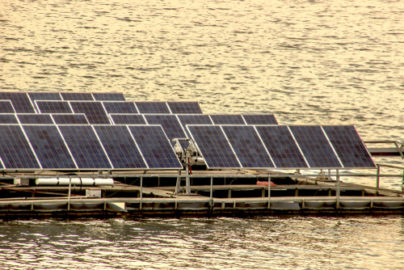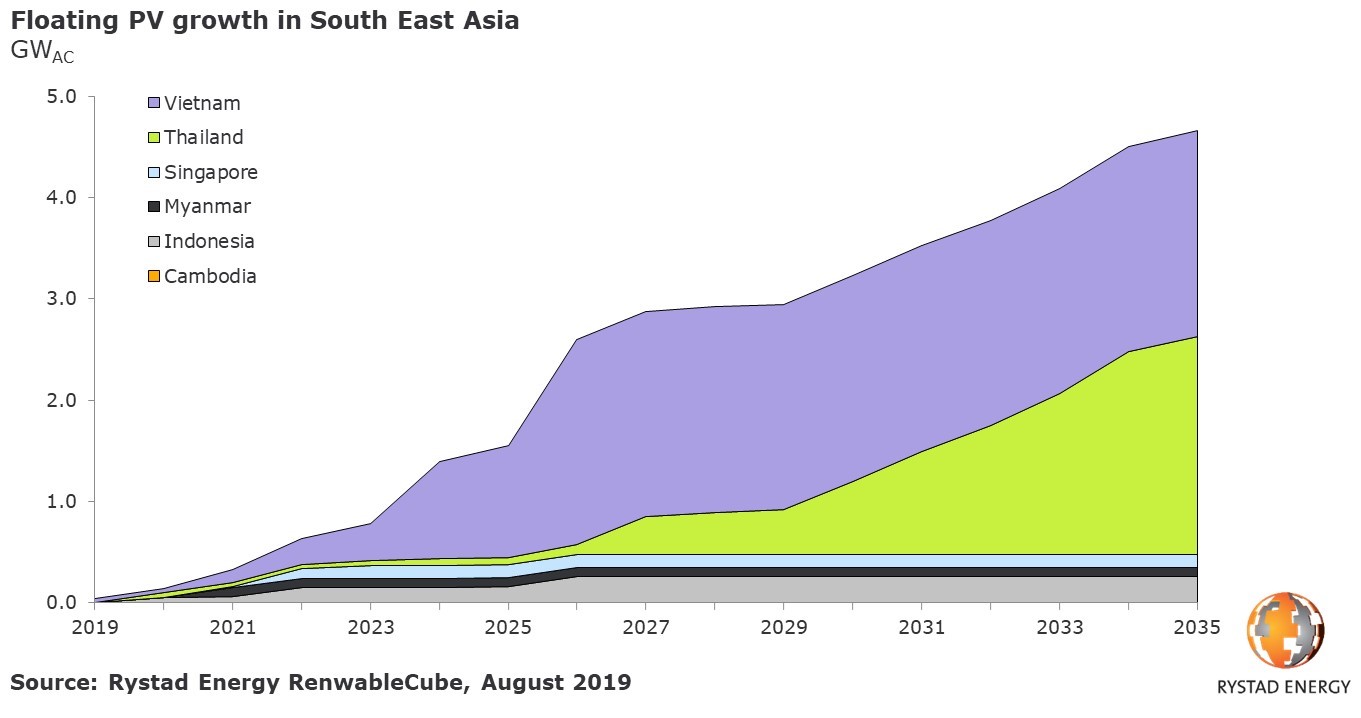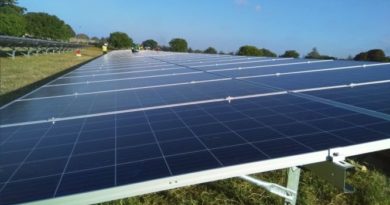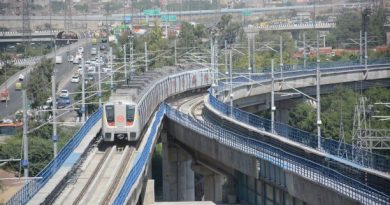Floating Solar is the Next Big Thing: Rystad Energy

The floating solar photovoltaic power plants are to make a big splash in the renewable energy market, especially the markets of South East Asia.
This was revealed by the energy research firm Rystad Energy, which in its official statement said that the rise is expected to increase one hundred-fold in South East Asia over the next five to 15 years as countries in the region look to substantially increase their share of renewable energy in the power mix.
The Norway based research firm has put Vietnam as the top country which leads the floating solar demand followed by Thailand, Singapore, and Myanmar. Development plans are in the works in Thailand and Vietnam as large-scale floating PV installations, with smaller utility-scale floating PV developments being proposed in Indonesia, Singapore and Myanmar.
Rystad Energy expects large-scale floating PV developments, typically installed on dams and reservoirs, will open new market opportunities to both new and existing players in the industry.

“Floating PV offers an attractive alternative for large and mega-scale ground-mounted utility solar development, allowing beneficiaries to take advantage of under-utilized dams and reservoirs,” says Mihn Khoi Le, an analyst on Rystad Energy’s renewables team. “We expect floating PV capacity to grow from current levels of 0.04 GWac to 3 GWac in the next 10 years.”
Vietnam currently has the largest operational floating PV plant in the region with 39 MWac of capacity, commissioned in May 2019. “After a ground-mounted solar boom, Thailand is now turning its sights to floating PV,” Minh added. The country is taking the lead in South East Asia and currently has several developments in the pipeline, with the floating PV setups to be installed at nine different hydroelectric dams. The Electric Generating Authority of Thailand (EGAT) plans to conduct tenders for each phase, the first of which closed on 20 August 2019. Currently the country has no operational large-scale floating PV capacity, making this an ambitious plan.
More projects are in the works across the region, with proposals being tendered in Indonesia and Singapore.
Floating PV plants are an advantageous option for land-scarce South East Asian countries to continue developing utility-scale solar power. Mostly proposed on hydroelectric dams and reservoirs, these PV plants will be able to connect to the grid using the connection points already available at hydroelectric facilities. This somewhat mitigates grid overload issues that often plague PV development and creates possibilities for the hybridization of power plants, promoting greater grid stability and flexibility.




